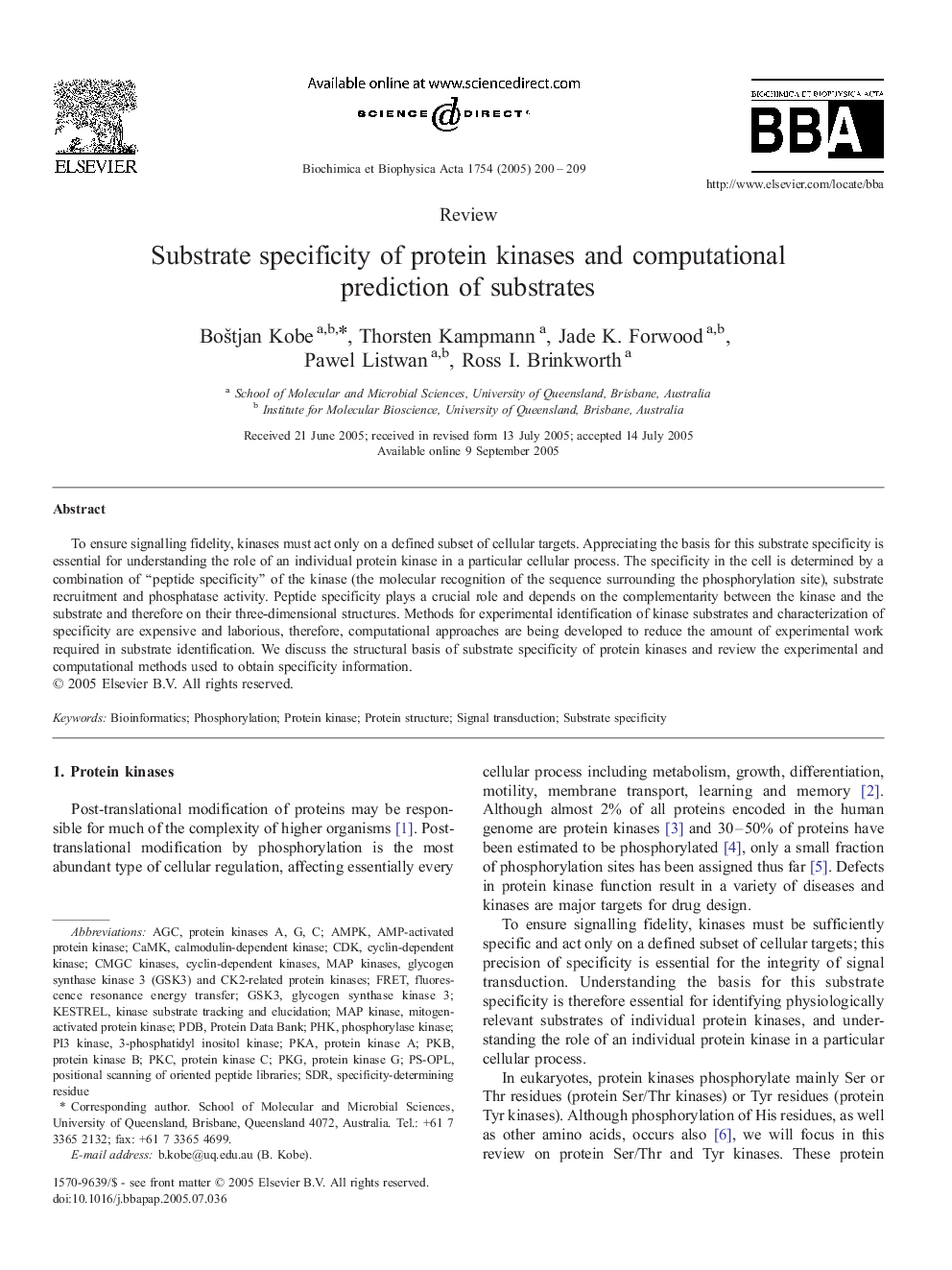| Article ID | Journal | Published Year | Pages | File Type |
|---|---|---|---|---|
| 9745086 | Biochimica et Biophysica Acta (BBA) - Proteins and Proteomics | 2005 | 10 Pages |
Abstract
To ensure signalling fidelity, kinases must act only on a defined subset of cellular targets. Appreciating the basis for this substrate specificity is essential for understanding the role of an individual protein kinase in a particular cellular process. The specificity in the cell is determined by a combination of “peptide specificity” of the kinase (the molecular recognition of the sequence surrounding the phosphorylation site), substrate recruitment and phosphatase activity. Peptide specificity plays a crucial role and depends on the complementarity between the kinase and the substrate and therefore on their three-dimensional structures. Methods for experimental identification of kinase substrates and characterization of specificity are expensive and laborious, therefore, computational approaches are being developed to reduce the amount of experimental work required in substrate identification. We discuss the structural basis of substrate specificity of protein kinases and review the experimental and computational methods used to obtain specificity information.
Keywords
AMPKGSK3PKCPKBCaMKPKGpKaAGCPDBSDRCDKAMP-activated protein kinasePhKPI3 kinaseFluorescence resonance energy transferFRETBioinformaticsSubstrate specificityProtein structurephosphorylase kinasePhosphorylationSignal transductionCalmodulin-dependent kinaseProtein Data BankProtein kinaseprotein kinase Aprotein kinase Bprotein kinase GProtein kinase Cmitogen-activated protein kinaseKestrelMAP kinasecyclin-dependent kinaseglycogen synthase kinase 3
Related Topics
Physical Sciences and Engineering
Chemistry
Analytical Chemistry
Authors
Boštjan Kobe, Thorsten Kampmann, Jade K. Forwood, Pawel Listwan, Ross I. Brinkworth,
